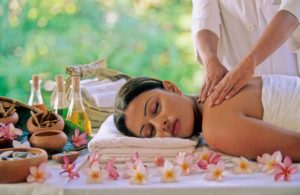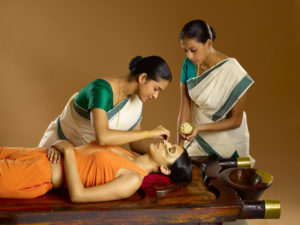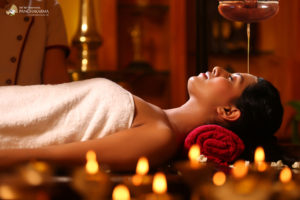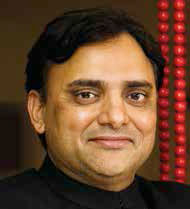Stimulating the Life Force
Ayurvedic massage or “Abhyanga” aids the movement of Prana, the vital energy in the body. A deeply relaxing and rejuvenating experience, it nourishes the body, and provides better physical stability
By Ayurvedacharya Dr Partap Chauhan
According to Ayurveda, everything is constituted of the pancha mahabhutas or the five elements – ether (akasha), wind (vayu), fire (agni), water (jala), and earth (prithvi). Living beings have an additional element: prana. Prana stands for the life force, a primordial energy, and is involved in physical, mental, and spiritual health and strength.
Prana is a Sanskrit word meaning “breath” and is understood as the vital, life-sustaining force of living beings and the vital energy pervading all natural processes of the universe. It is a central concept in Ayurveda and Yoga where it is understood to flow through a network of fine subtle channels called nadi. It is the life energy which activates the body and mind.
This energy circulates in the body through food, drink, and breath, and gives life and animation to the living organism. However, due to disease or improper foods and lifestyle, it meets with blocks as it traverses through various energy channels. Massage is a therapy that helps remove these blocks and aids the circulation of vital energy in the body.
Ayurvedic massage, or “Abhyanga”, is a part of the traditional detoxification and rejuvenation program of Ayurveda called “Panchakarma”, in which the entire body is rhythmically massaged with large amounts of warm oil and herbs to remove toxins and blocks from the system. The rhythmical and deeply relaxing movements of the massage remove stagnant energy and move the prana or life force to stimulate your body’s vital energy.

The history of Ayurvedic massage dates back several centuries to healers who worked miracles with their hands. Massage, as a therapeutic and healing therapy, is known to have been practiced by the ancient Indian physicians, Sage Charaka, Sage Sushruta, and Sage Vagbhata. Warriors and soldiers had to undergo mandatory massage routines during their training period, because massage helped limb manipulation and improved agility in general.

The literal meaning of massage is manipulation of the soft tissues of the body using the hands. In Ayurvedic treatment, massage is done in a traditional manner typically with application of medicated herbal oils. Different ailments require specific massage techniques, which the therapist selects keeping the individual’s condition in mind.

The basis for effectively performing the various Ayurvedic massage techniques is a thorough understanding of the primordial energies of the five elements (ether, air, fire, water, and earth) and of vata, pitta, and kapha – the three basic constitutional types. This knowledge allows the therapist to customize treatments and determine the speed, force, number of repeated massage movements, type of herbal oil, and the massage technique suitable to the person’s physical strength, age, and ailment.
Ayurvedic Massage is a deeply relaxing and rejuvenating experience. Regular massage protects from stress, anxiety, exhaustion, and Vata disorders. Abhyanga nourishes the body, extends the life span, provides good sleep, improves the skin texture, improves the vision, and provides better physical stability. It has excellent benefits in the treatment of certain illnesses too.
(The author is Director, Jiva Ayurveda, New Delhi)

